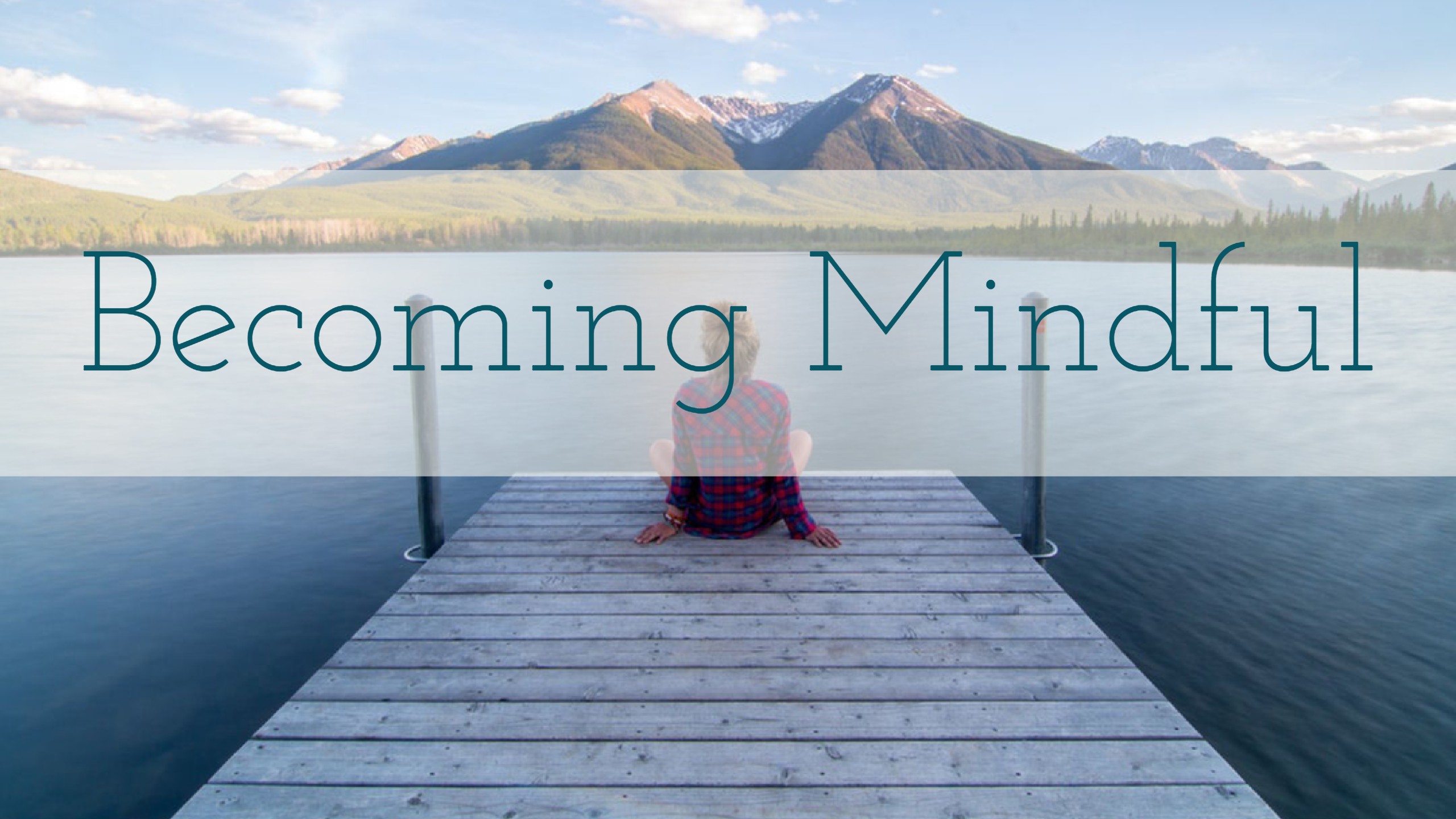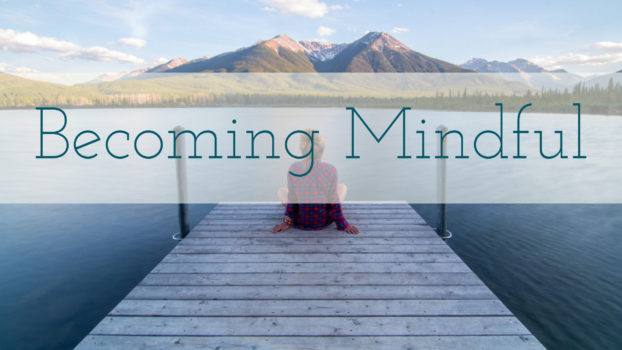What is Mindfulness Anyway?
The conversation about mindfulness has exploded in the past few years. Still it seems to be more complicated than it should be to understand what it means to be mindful. Mindfulness sort of feels like the kind of thing we all know we should be on board with, but at the same time don’t really know exactly what it means. Of course you think everyone should be mindful, what kind of self-respecting healthy person wouldn’t, right? I think?
I hope to clear the confusion about being mindful as well as to help you understand how you can benefit from being mindful.
Mindfulness is the act of noticing yourself right now. That’s it. What are you thinking and what are you feeling right now, in this exact moment?
MINDFULNESS IS ABOUT NOTICING YOURSELF
Can you notice your current thoughts? You current physical feelings? Can you think about your thoughts? The ability to be aware of your own consciousness is one of the ways we separate ourselves from other animals. We can think about thinking. Think about that. That’s wild.
Being mindful means noticing your emotions before you automatically respond to them. Instead of feeling an emotion and immediately reacting, can you say, “whoa I’m feeling upset right now, what’s going on?”. Can you notice your sadness? Can you notice your embarrassment, jealousy, excitement, hope? If you can begin to feel these emotions as they occur, then you can begin to put space between the emotion and the reaction.
It’s a powerful moment when you can feel that separation of thought and action. It’s a clarity and sense of contrl we do not feel often. This space of noticing ourselves helps us understand that we are not our thoughts; we are not our past; and that our futures as not set in stone.
HOW I ACCIDENTALLY LEARNED TO BE MINDFUL
I used to roll my eyes when people talked about mindfulness. It seemed silly or even a bit cheesy until roughly six years ago when a good friend and I went backpacking to a small lake in Unicoi. As the sun began to set we watched a few small bats begin flying above this lake feeding upon the mosquitos that were in turn feeding upon us.
As we watched, our conversation turned to noticing the idea that whether we were there or not, these bats would be flying and feeding above this lake. It was such a simple observation but it comes back to me often. I began to understand that no matter what concerns, frustrations, anxieties, or griefs I felt, these bats would still be flying. If I made a mistake, they would continue flying. If I was anxious about the future, they would continue to fly. No amount of regret about the past or worry about the future was going to change the fact that these bats were going to come out each night. Life has a stubborn persistence and that realization has helped ground me many times when my thoughts begin living in either the past or the present.
I’ve have since learned this lesson a number of times. I have watched creeks and realized that no matter how difficult life gets, these creeks will continue to flow. I’ve seen clouds float by and understood that even on the darkest days, the clouds will continue to float. These images prompt me to come out of my head and back into the present. The only time period I have any control over.
HOW NOT BEING MINDFUL HURTS OUR MENTAL HEALTH
Our minds seem to enjoy living in either the past or the future. If we have experienced trauma, we find our thoughts exploring past events again and again. If we’re depressed or anxious, we find ourselves creating future scenarios in which we continue our current glim trajectory.
Becoming mindful means recognizing when our minds begin these unhelpful patterns and intentionally bringing out attention back to the present moment. It doesn’t mean devaluing the past or the future, but rather it boosts the value of the present. Actively noticing whether we are being present minded helps us put more healthy boundaries on the past and the future.
Our emotions have a way of minimizing our worlds. Depression, anxiety, grief, anger all manage to shrink our perspectives. Being mindful restores a healthy perspective about ourselves.
SIMPLE WAYS TO PRACTICE MINDFULNESS
While I believe we should set aside time to be quiet and reflective each day, it’s not for everyone and can seem intimidating at first. There are a number of less demanding ways you can practice mindfulness. Here are just a few ideas:
- Breathe on Purpose and Breathe Right
This is my sure fire strategy for putting myself to sleep when I’m tossing and turning. There are hundreds of instructions online for deep breathing exercises. I like “box” breathing or “four-square” breathing. Simply breathe in for four seconds, hold four seconds, exhale four seconds, hold four seconds, repeat. While doing this focus on noticing all aspects of the breathing process you can. Notice the feeling of air coming into your nose and mouth. Notice your lungs and abdomen expanding. Notice the pressure of holding the breath. Notice deflation while exhaling. Your mind will wander, and when it does just go back to noticing the breath. You’ll be relaxed or asleep in no time.
- Yoga is a common mindfulness activity
Yoga instructors are always huge mindfulness advocates. They’ll help you understand using your body to become mindful by noticing the way your muscles and joints respond to movement. If you don’t have time to attend a class, follow along to a video on YouTube.
- Put reminders to check in during the day
Place a new magnet on your fridge, or a blank post it note on the lid of your laptop, a small note in your purse, or just put a reminder in your phone to prompt you to take a few minute and check in with yourself. Notice where your thoughts are. Notice what your feeling. Notice how you feel physically.
- Ground Yourself
A simple way to do this is the note five things you can see, four things you can feel, three things you can hear, two you can smell, and one you can taste. Using our senses is an effective way to be present.
- Make your daily shower mindful
Notice the warm water. Notice the sound of soap bubbles popping. Notice the rhythm of water falling. Note the feeling of the hard floor or the cold walls. Start your day by practicing noticing the present.
- Eat mindfully
Eating is another activity we do every day which can become a mindfulness practice. Use the moment to notice the texture of your food. Notice the tastes. Notice any sounds involved with eating. Slow down and become present.
- Watch Yourself
I often encourage my clients to watch themselves as if their life was a movie and they were the central character. Or reading a book written in third person about themselves where they can understand all the character’s thoughts, motivations, and emotions. Approaching your own life in this way can help you gain a more healthy perspective of your emotions, thoughts, and behaviors.
More Resources:










